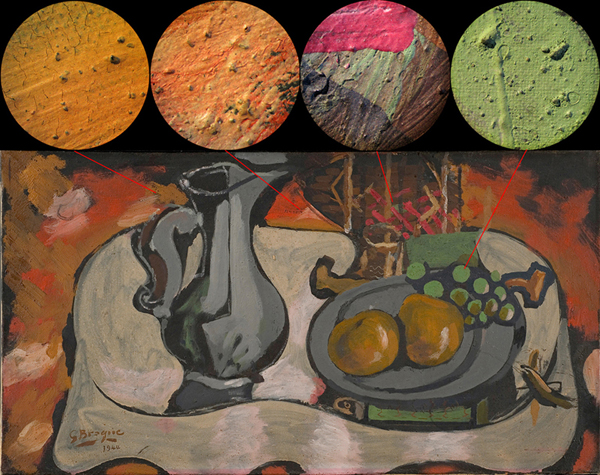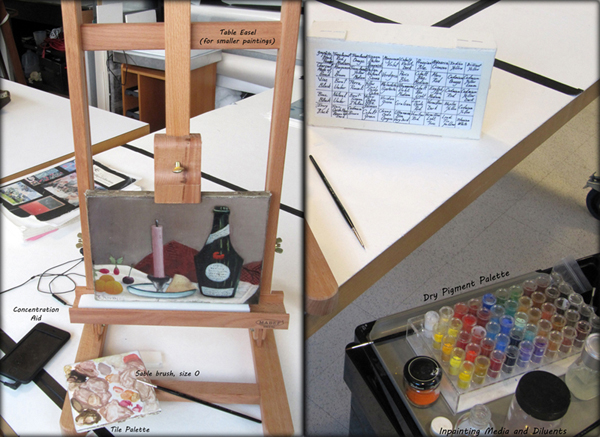Inpainting, also known as retouching or ‘loss compensation’, is one of the final steps in a conservation treatment. Conservators custom mix dry pigments with stable and reversible media to get just the right color to retouch losses and abrasions on an artwork. Inpainting is confined to areas of lost paint only. It is intended to be invisible to the naked eye but distinguishable from original paint on close inspection or examination under ultraviolet light. The use of small brushes makes for a slow and exacting process. Something to listen to on the radio or a playlist, podcast, or audiobook is a necessary ‘tool’ for most conservators when completing this work.
Tag Archives: conservation
Through the Microscope: ‘Pot d’Etain et Assiette de Fruits’ by Georges Braque, 1944

Selected views of the unvarnished paint surface of Braque's small still life seen through the microscope at 20x magnification. Examining a painting through the microscope can be like looking into another world. The surface of this picture, in particular, resembles a Martian landscape, with craters in the green paint (formed by air bubbles in the wet paint) and 'boulders' of sand mixed throughout. In reality, the microscope is an important aid in learning about an artist's materials and working methods as well as understanding an artwork's state of preservation. 'Pot d'Etain et Assiette de Fruits' is part of the permanent collection and is now on view at the Phillips. Photos: Patricia Favero
Reviving and Exploring a Masterpiece

Detail, Hilaire-Germain-Edgar Degas, Dancers at the Barre, early 1880s–c. 1900. Oil on canvas, 51 1/4 x 38 1/2 in. The Phillips Collection, Washington, D.C. Acquired 1944.
If you missed our Conservator’s Perspective talk last week with Head of Conservation Elizabeth “Lilli” Steele and Head of Paper Conservation at the Library and Archives of Canada Anne Maheux, check out this 2008 Washingtonian article detailing Lilli’s experience delving into Degas’s masterpiece. For those who love the world of artists’ tools, artistic process, and a good mystery, this is a must-read.

